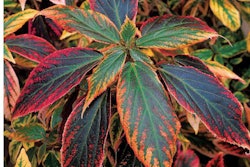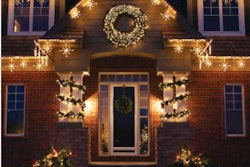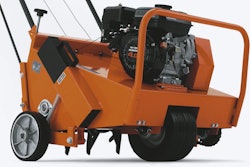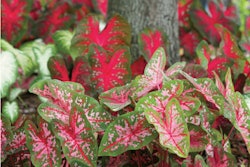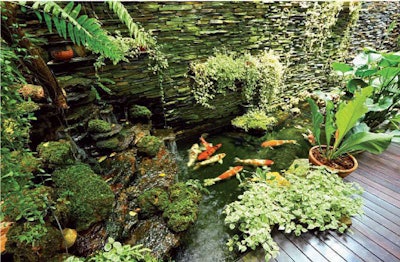
Koi pond installations can be profitable but require expertise. Here’s how to test the waters.
Client + pond installation contract + water + fish = profit. Simple enough, right?
Not necessarily, and while the profit margin can be large for installing koi ponds, it’s smart to dip a toe into providing this add-on service before diving in head first.
“It’s much more than digging a hole, filling it with water and throwing a few fish in,” says Tim Krzeminski, owner of Laughing Waters in Chicago, Illinois. “About 60 percent of my work is correcting what other contractors have installed. The slightest error can cost you thousands of dollars. I’ve seen so many good contractors fall into lawsuits over this. It only takes one bad job to ruin your reputation.”
Experts interviewed for this article have spent years building koi ponds, learning from their successes and mistakes. Here are their tips:
Koi need sunlight and shade to thrive.Educate yourself before investing your reputation and resources into building koi ponds. Many variables come into play, including balancing pH levels in the water, choosing a reputable fish supplier, how to care for the fish, blending the pond with its surroundings, choosing the correct filtration system, laying the liner properly and more.
You can find inspiration for designs by viewing other contractors’ work in books and on the web. Take a class at your local college or through companies like Aquascape, or employ a subcontractor on a few jobs to learn from his or her expertise.
Krzeminski worked with several experts in the field before venturing out on his own. “It’s all about learning from each project and constantly being challenged. Take notes and learn step by step. You’ll just get better and better,” he says.
Today, he travels across the country installing koi ponds and other extravagant water features, including some that have required six months to build and incorporated 20-ton boulders. Building koi ponds is profitable, he says. With $2,000 worth of materials, three laborers and a skid steer loader, Krzeminski’s crew can build an 8-by-16-foot koi pond, billing the client $7,800.
Once you’re in the swim of things, here are other considerations:
Choose the right location and depth. Your pond should be at least 18 inches deep to keep the water from becoming too hot. Cooler water temperatures at the bottom of deeper installations provide refuge for fish and protection from predators.
Also consider a partially shaded area in which to build your pond. Fish need sunlight and shade to thrive. But be mindful of adjacent large trees whose deep root systems may spread and disturb the pond.
Consider surrounding topography. “One mistake I’ve seen contractors make is building a pond in an area where there may be run-off and heavy water flow. During a rain, the water will flood the pond, sometimes washing the fish right out and down the hill,” says William Dickerson, owner of Dickerson Landscapes in Tallahassee, Florida, and a 2011 TLC Landscaper of the Year Finalist.
Be creative. Envision various sizes and shapes for overall designs, and try to include unique features. Krzeminski builds interactive ponds, some of which include stepping stones, waterfalls and “caves” underneath water falls.
Incorporating a variety of plants into a pond will help it blend with its surroundings and provide protection for the fish.Don’t cut the liner too small. Provide enough slack to fix problems that may occur later. The pond will settle over time. Pond liners should be bought as a single piece and larger than the hole. They can always be cut down. Splicing two pieces together can cause leaking.
Plan for plants. Plants enhance the beauty of a pond and help it blend into its environment. Use a variety of textures, shapes and colors, including floater plants such as lilies. Along the perimeter, lobelia, irises and Russian sage are good choices, says Mark Halla, owner The Mustard Seed Landscaping & Garden Center in Chaska, Minnesota, and a 2009 TLC Landscaper of the Year Finalist. He also suggests using water hyacinth in sunny areas and water lettuce in the shade. Both filter heavy metals from the water.
Don’t overcrowd the pond with plants. If it’s small, too many plants will take over. Use smaller plants in those cases, such as dwarf cat tails and lizard tail. And stay away from vines since they eat up the nutrients in the water.
Consider variables when selecting a filtration system. If there are a lot of trees in the area, Halla uses a large skimmer to collect surface debris. If the pond is more than 3 feet deep or 18 feet long or contains an abundance of fish, he uses a snorkel or bottom filtration device to prevent the water on the bottom from stagnating. Adding a variety of plant life and installing a UV filter also help keep water clear, says Ray Vivar, a project engineer at TotalPond.
Avoid over-feeding fish. Koi eat more than prepared fish food. They also feed on insects and algae. “Koi don’t eat much once the temperature gos below 50 degrees, but people keep feeding them,” says Dickerson. “The food can sit on the bottom of the pond and create ammonia, which is detrimental to the fish and will encourage algae bloom.”
Provide services after the installation. There are a variety of ways to continue to make money after completing projects. Halla houses clients’ fish in tanks at his garden center during the winter. It comes in as 100 percent profit, he says, since the team already stores its own fish at the shop, and koi aren’t fed during the winter. His crews also provide maintenance services, such as spring cleaning of ponds, and sell maintenance products like nets to keep hungry critters out of ponds and plants.
The word “koi” means domesticated carp in Japanese.
Adult koi can reach 30 inches in length.
Average lifespan is 50 years, but can live well beyond 100 years
Can be trained to take food from your hand
Some individual koi have been be valued at more than $100,000.
Vibrant color is an indication of good health in koi.
Koi have no stomachs, but expandable small intestines function as a stomach. Small teeth in the back of a koi’s throat are used to crush crustaceans they may ingest.
Fine fish
Choosing a reputable koi breeder is key. Mark Halla buys his fish from a local breeder and displays them in tanks at his garden center. This allows customers to choose their own fish. He says breeders should:
• Guarantee fish for at least 48 hours after arrival.
• Ship fish overnight.
• Add oxygen to the bags in which fish are stored and transported.
• Have a replacement policy if fish are DOA or don’t meet specified expectations regarding size, color, etc.

